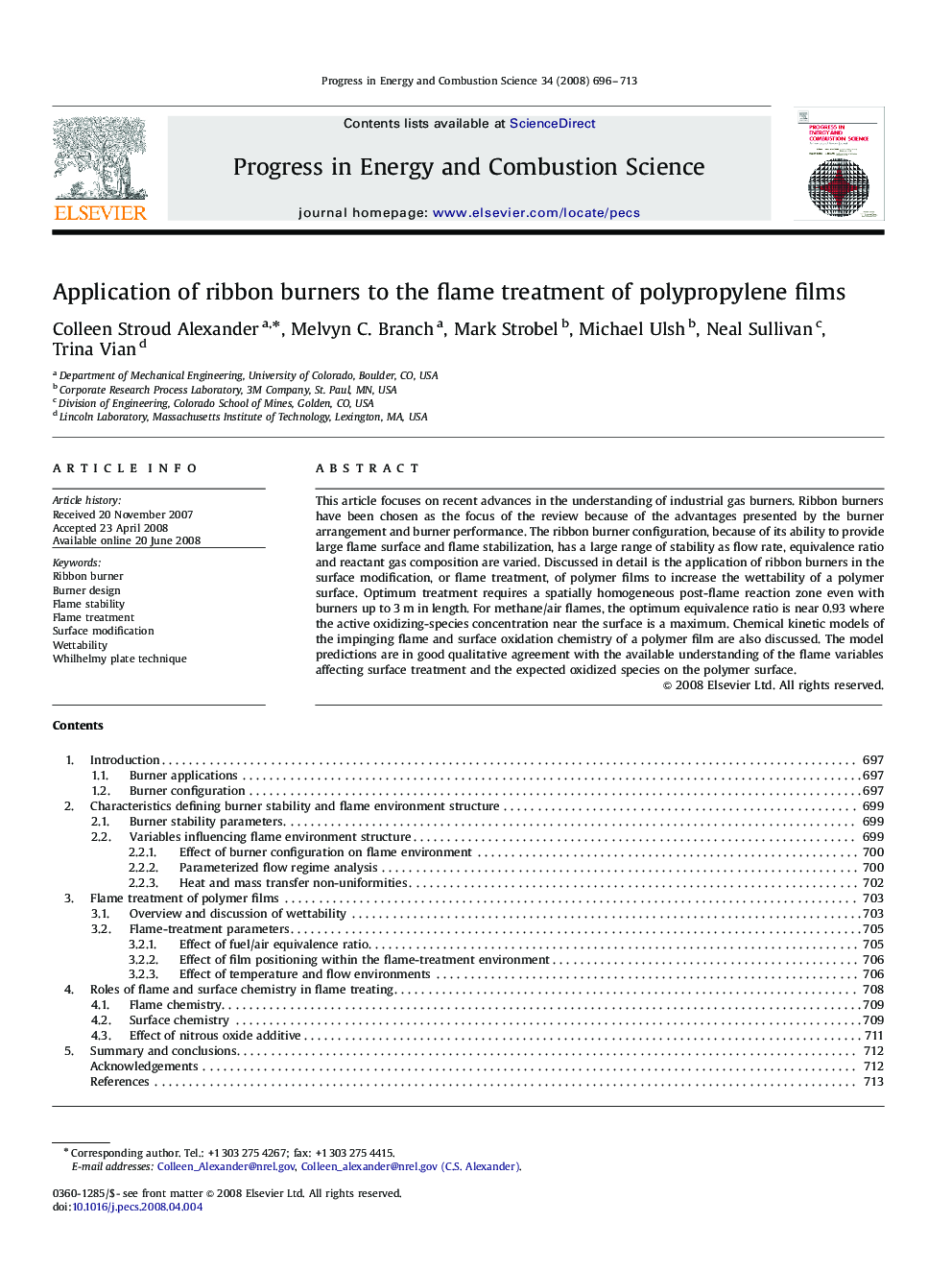| Article ID | Journal | Published Year | Pages | File Type |
|---|---|---|---|---|
| 241814 | Progress in Energy and Combustion Science | 2008 | 18 Pages |
This article focuses on recent advances in the understanding of industrial gas burners. Ribbon burners have been chosen as the focus of the review because of the advantages presented by the burner arrangement and burner performance. The ribbon burner configuration, because of its ability to provide large flame surface and flame stabilization, has a large range of stability as flow rate, equivalence ratio and reactant gas composition are varied. Discussed in detail is the application of ribbon burners in the surface modification, or flame treatment, of polymer films to increase the wettability of a polymer surface. Optimum treatment requires a spatially homogeneous post-flame reaction zone even with burners up to 3 m in length. For methane/air flames, the optimum equivalence ratio is near 0.93 where the active oxidizing-species concentration near the surface is a maximum. Chemical kinetic models of the impinging flame and surface oxidation chemistry of a polymer film are also discussed. The model predictions are in good qualitative agreement with the available understanding of the flame variables affecting surface treatment and the expected oxidized species on the polymer surface.
